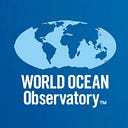RESCUE part 9: UNCLOS and Biological Diversity
This week we continue the multi-part RESCUE series with UNCLOS, the United Nations Convention on the Law of the Sea. In early March, the UN finalized a consensus agreement to work toward the conservation and protection of ocean resources and ecosystems.
One of the greatest concerns with the enforcement of the United Nations Convention of the Law of the Sea has been the definition and enforcement of protections of ocean biodiversity outside limits of national jurisdiction. Just last week, at the UN in New York, after some ten years of negotiation, an adjunct agreement was reached to address that particular area that entails the true asset value of the ocean commons and has been threatened by pollution, acidification, indiscriminate harvest of fish toward extinction, illegal practices and human rights abuses, the threat of deep sea mining, and the exploitation of marine species as intellectual property in the form of genetic value and organisms exploited by patent for private profit.
The global ocean community has experienced a paroxysm of celebration and congratulation, and indeed, many organizations and many individuals have invested endless hours of negotiation and draft exchanges to reach some compromise that might be acceptable to all interests, particularly the 60 government ratifications required for the agreement to come into force. It becomes yet another tool for the global community to work toward conservation and protection of the vast resource that is the ocean for the survival of all mankind.
I have consumed the 54-page document (entitled in its entirety — its articles of provision, its definitions, its administrative organization, its process for application, environmental evaluation, and its review by professional committees, approvals, surveillance, enforcement, and operational controls. Most of the content pertains to process and I began to wonder where the true value lies as justification for the decade of work and celebration.
There appears to be four main elements contained therein. First, there is an articulated program for definition in advance, application, review, performance, evaluation, communication, and distribution of information derived from research expeditions. This process includes a central authority and repository for all the assembled materials and outcomes.
Second, there is an established system for monetary valuation, collection of dues, grants, dispensation of royalties, and other financial outcomes derived from the research from initial investigation to profits ultimately paid. Third, there is the creation of a system for financial renewal through which such incomes are designated to assist developing coastal or landlocked nations to afford local engagement, investment, and capacity. And fourth, there is proposed a system of governance, future meetings, standing committees, and other administrative practices to oversee results, adjust or advance changes, and otherwise drive forward and sustain the combined effort and its success.
So, what we have here, and what the ocean apparat has so enthusiastically embraced, is a consensus agreement for oversight and implementation of the investigative and commercial applications of scientific and entrepreneurial return from research in the ocean commons, worldwide, from seafloor and below, to water column and above, of the marine plants and animals, known and unknown, otherwise vulnerable to unrestricted, unregulated exploitation without limit.
Buried in the architecture of the instrument is the locus for the accumulated financial reward, located in the Global Environment Facility, an independent agency funded by grants from participating governments, where financial returns are to be held in trust, annual dues recorded, dividends and royalties received, and grants to be paid out in support of programs in places where catalytic finance is required and protection often most needed as a result of geographical, social, and political involvement and profit-driven exclusionary practice.
There are “ifs” to be met by this victory: if the instrument is ratified; if the structure and capacity can be built in time; if public and private finance plays by the new rules; if the conventional paradigm of profit first at any cost is ameliorated by determinant principles of precaution and polluter pays; if an integrated ecosystem management approach, can be applied; if indigenous participation and knowledge is respected and included; if there can be equitable sharing of scientific and intellectual property; and if the acceptance of the ocean is a primary scape for the common heritage of all mankind can be declared central to our plan for RESCUE:
R for renewal
E for environment
S for society
C for collaboration
U for understanding
E for engagement
PETER NEILL is founder and director of the World Ocean Observatory, a web-based place of exchange for information and educational services about the health of the world ocean. He is also host of World Ocean Radio, upon which this blog is inspired. World Ocean Radio celebrates 15 years this year, with more than 660 episodes produced to date.
